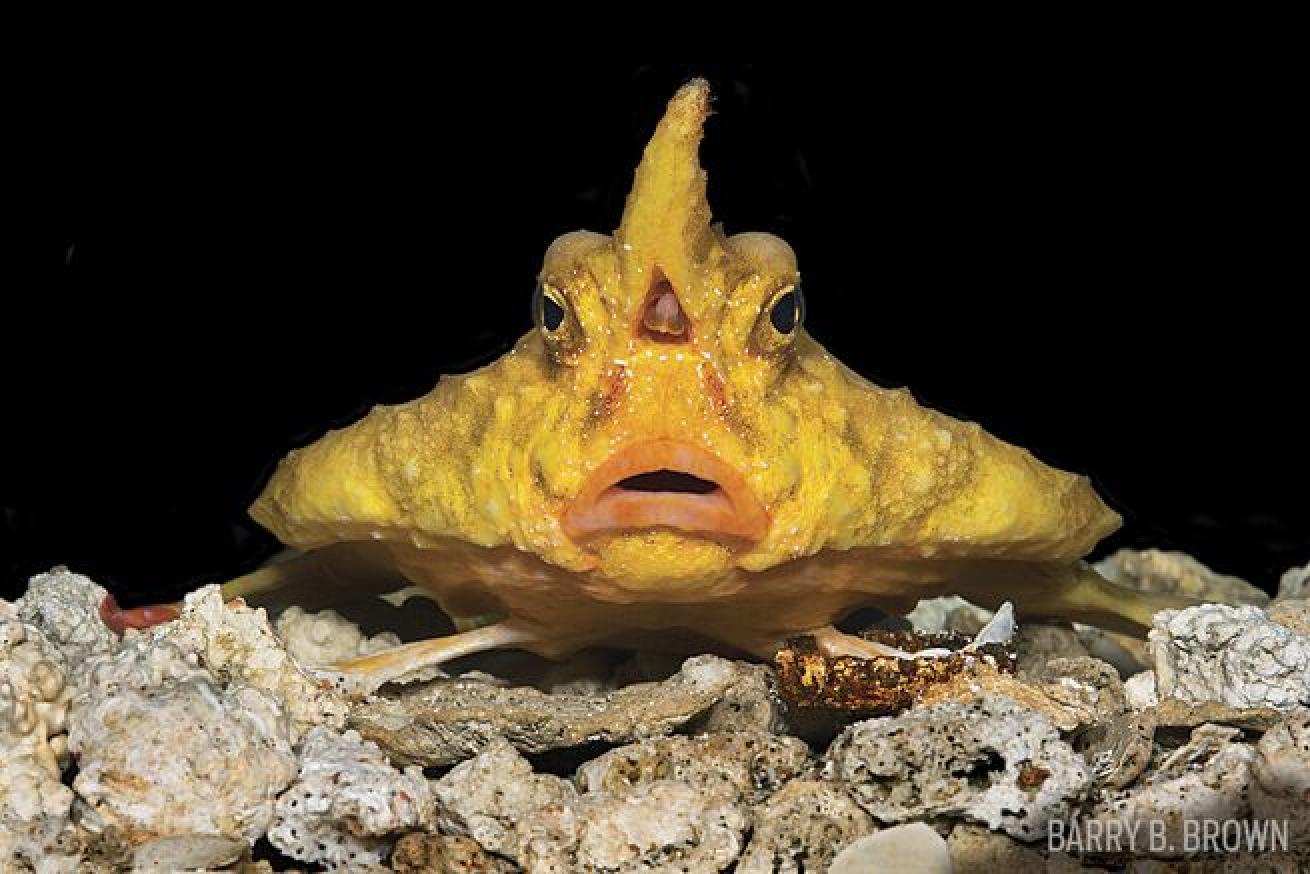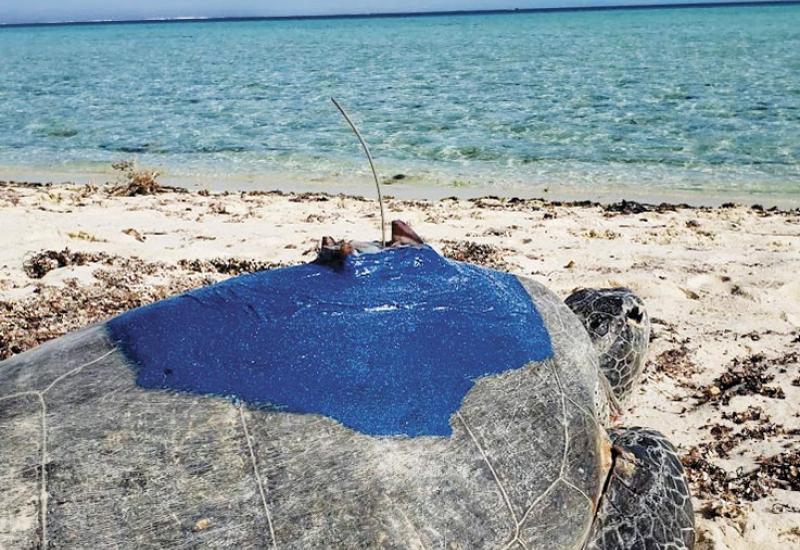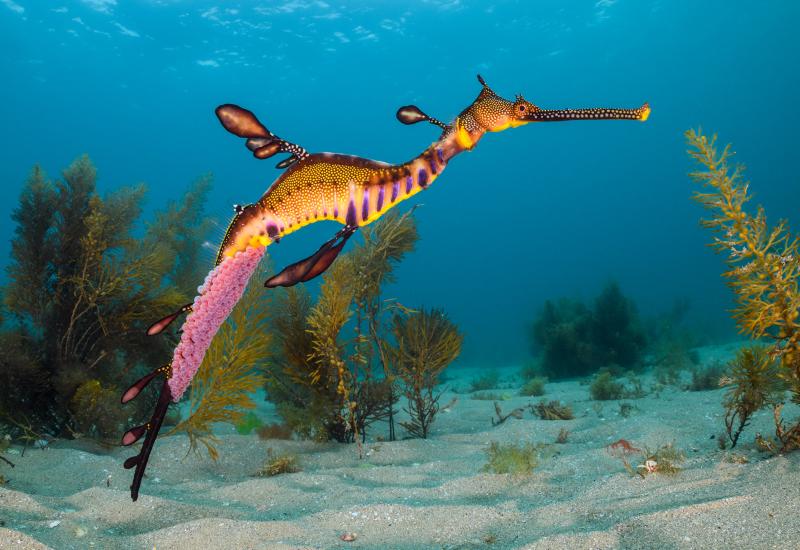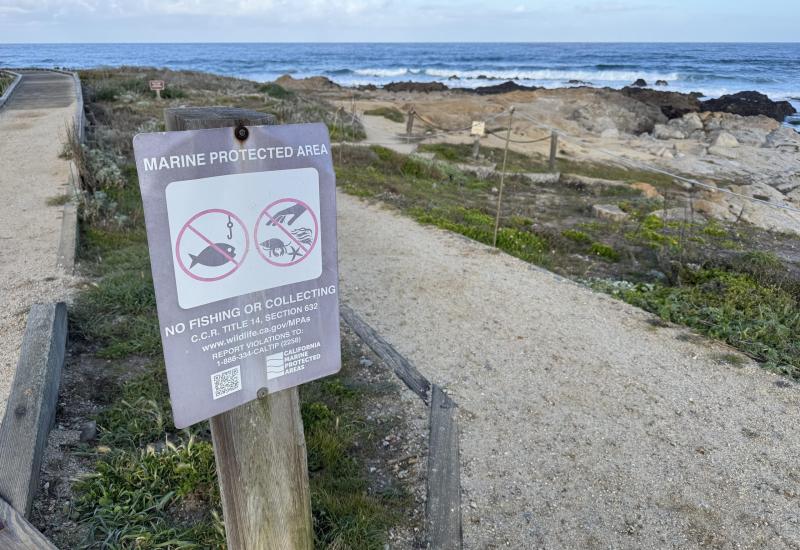Walking Fish of the Underwater World
With almost 30,000 species of fishes, it’s perhaps not surprising that some of them might walk. Walking has evolved independently in several lineages of fishes, from tripod fish that walk on stilts miles below the surface to the so-called walking sharks of New Guinea, which use their rigid pectoral fins to move their eel-like body through shallow coral gardens.

Barry B. BrownA red-lipped batfish
Many walking fishes, including frogfishes and scorpionfishes, share the common trait of having lost their swim bladders. Much like a diver’s BC, the swim bladder is the buoyancy device of the swimming fish to which it adds and removes air to maintain neutral buoyancy.
Related Reading: Discovering Patagonia's Winged Comb Jelly
Given that walking fishes need to be negatively buoyant, the swim bladder serves no function and has been lost. However, with significant effort, these fishes are able to swim using their tail fin when the need arises.
Other fishes, such as the red-lipped batfish, hunt on the seafloor, so walking brings them into close contact with their prey. Like anglerfishes, they have a small, inconspicuous lure that is usually hidden under the nose. The batfishes, of which there are 60 or so species (including the one shown above), are highly adapted for an ambulatory lifestyle. They have modified pectoral, pelvic and anal fins, which allow them to stand and walk along the seafloor.
Related Reading: 7 Liveaboards to Book if You Love to Learn
The handfishes of Tasmania, Australia, are a small group of prototype frogfishes that also walk along the seafloor. They were given the common name of handfish due to the rigid fin rays in their pectoral fins that resemble fingers. Their preference for walking has meant that they haven’t been able to swim away from human-induced habitat degradation. As a result, the spotted handfish is now listed as critically endangered on the IUCN Red List.










